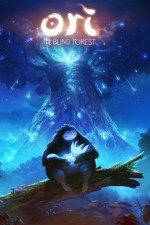Please support Game Informer. Print magazine subscriptions are less than $2 per issue
Ori and the Blind Forest

Super Metroid and Castlevania: Symphony of the Night are widely regarded as two of the best games of all time, but official 2D sequels have been few and far between recently – and usually relegated to the handheld space. That absence has spurred indie developers to co-opt the classic formula and make it their own. With its new title, Ori and the Blind Forest, Moon Studios seeks to deliver a Metroid-like experience with a mix of pixel-perfect platforming à la Super Meat Boy and the crisp visuals of Studio Ghibli’s animated films. It sounds like a powerful cocktail that may appeal to -millions of gamers, and Microsoft has already bet big on this new IP. But can a ragtag team of developers from around the world – many of whom have never met – overcome its unique development challenges and create an instant classic?
[Editor’s Note: This feature was originally published in issue 258 of Game Informer Magazine]
A MEETING OF LIKE MINDS
Thomas Mahler didn’t take the traditional route into game design. The Austrian native studied sculpture in Vienna. Traditional sculpture work proved a challenging career path, so Mahler started freelancing, making digital 3D models to help pay the bills. After working up a sizeable portfolio, Mahler began getting job offers from the likes of Disney and Blizzard, and eventually took a job working on StarCraft II.
Mahler wasn’t content working on other people’s ideas, so after putting in a full day of work at Blizzard, he would go home and tinker with his own game concepts. One idea featured a little forest spirit named Ori who traveled through 2D painted backgrounds. Mahler didn’t think he could turn his ideas into bankable products on his own. He wouldn’t have to.
Gennadiy Korol cut his teeth scripting tools for feature films in Israel. He loved everything about the technical aspect of computer graphics and animation, and since many designers struggled with the complicated interfaces behind 3D modeling and rendering software, Korol had built up a side business making tools to assist designers with their work. While scrolling through forums about Autodesk’s Maya 3D animation software, Korol met Mahler.
“I was always going on about how badly these things were designed, how you need way too many hotkeys, and how this is totally not like sculpture where you put forms on it and shape it,” Mahler says. “So when I first meet Gennadiy, I was probably screaming at him because his tools weren’t working the way I wanted them to.”
“They always worked perfectly,” Korol quips.
“Yeah, he’s probably right,” Mahler says.
The two bonded over programming tools, and started to dream about designing their own games together. Mahler and Korol formed Moon Studios and over the course of six months they prototyped a demo for a first-person shooter with real-time strategy elements they jokingly called War Soup. Both developers felt they had a solid concept that they could pitch to a publisher, but selling a game takes time, and the two young designers quickly grew restless.
“We said, ‘While we’re waiting to sign this game let’s do a smaller game; let’s do something we can sign in half a year,’” Korol says.
That half-a-year project became Ori, and evolved into a four-year development timeline that has consumed their lives and turned their two-man studio into a 20-plus person team spread across the globe.
A BASHFUL SPRITE
Ori is a forest spirit born into exile and raised by a loving bear-like creature named Nuru. However, when Ori’s mother dies, the young creature must go on a journey of discovery and ultimately fulfill his destiny by saving a dying forest. Ori is joined by a light spirit named Sein, who teaches Ori about the world and assists him while fighting monsters by unleashing a series of energy-based attacks.
Around the time that Mahler and Korol started plotting out Ori and the Blind Forest, the indie platformer Super Meat Boy released for Xbox 360 and PC. “We were very inspired by Super Meat Boy,” Korol says. “We needed something to wrap the game concepts around, and so we decided to make it a platformer.”
While, Moon Studios has always sought to emulate Metroid’s classic 2D exploration, at its heart, Ori is also a platformer. Many of the skills and power-ups that Ori acquires through his journey reflect this. In true Metroid fashion, Ori gains new abilities – such as double jump and wall run – that allow him to access new areas and find hidden secrets and upgrades scattered around the world.
A great example of this is the bash attack. Early on in the game, Ori is tasked with bringing water back to a dying forest. As he searches for a way to do this, he travels to an area called the Ginso Tree and learns this new ability. Bash allows Ori to grab onto objects, enemies, and projectiles before bouncing off them and shooting off to higher platforms. Interestingly, the object that Ori bashes gets thrown in the opposite direction. This mechanic has given Moon plenty of opportunities to craft platforming puzzles where Ori has to throw enemies into deadly traps or bash off enemy projectiles to reach high ledges.
We play through one sequence where we must toss an enemy projectile through a series of redirecting portals in order to send it to the top of the screen and smash apart a barricade. Ori’s controls are instantly intuitive, and it’s a lot of fun just to bound around Ori’s lush environments. This is likely because Moon spent a full year iterating on the controls before working on the art.
“People always talk about how gorgeous Ori is but we’ve actually spent more time working on the gameplay,” Korol says. “We always start with the solids; if enemies aren’t fun to fight when they’re jumping boxes then they’re not going to be fun to fight when they’re fully produced 3D models.”

GLOBAL ENTERPRISE
With the traditional development model, a core group of designers decides on their project and then starts gathering a larger team into a single space where they share ideas and build on each other’s work. Modern technology, however, has freed developers to start working from home; Moon Studios has chosen to allow all of its developers to work remotely.
“At traditional studios you have this problem of, ‘Hey we found this person with a portfolio who has exactly what we need, but they’re not able to relocate because of this or that,’” Mahler says. “With Moon I really wanted to try this concept of having a studio that was spread across the world. I want Moon Studios to be like The Beatles or Oasis or something – a place where a group of really talented people work on something that they really feel passionate about and then accomplish something that none of them could do on their own.”
Two years into the project, Moon Studios brought a demo of the game to Microsoft in order to find out if the publisher would continue funding their game. Not only did Microsoft agree to see the project through to finish, it gave the game a big spotlight during both its E3 and Gamescom press conferences this year.
To celebrate this milestone, several of Moon’s developers met up in Disneyland Paris. Even though Mahler and Korol had been working together for over five years at that point, it was the first time that the two had met in person. Some of the other team members didn’t shake hands until earlier this year at E3, which is no wonder since the entire team is spread across countries as far ranging as Austria, Germany, Israel, the United States, the Netherlands, Denmark, Canada, and Australia.
“It would be nice to have a few more water-cooler moments, because you don’t really have much of that aside from people making fun of each other on Skype,” Mahler says. “But my experience of workflow at places like Blizzard was that if you had a problem then you needed to run over to the tech department and hope the person you need to talk to was there, and then bring them back to your desk before showing them the problem. There are inefficiencies even in having everyone in the same building.”
Moon Studios has had to deal with the communication lag that happens when talking to people on the other side of the world, but the benefit is that there is always someone working on the game. Mahler can send out an email to the team before heading to bed and then wake up and review the edits over his morning coffee. For close to four years, people have been working on Ori and the Blind Forest nearly 24/7.

PUSHING AGAINST GRAVITY
Working so hard on the game for over four years has allowed Moon Studios to create an adventure with a diverse amount of gameplay.
“I always loved this thing about Nintendo,” Mahler says. “In the older Nintendo games in the ’80s and early ’90s, you always had this feeling that there were so many different ideas in a single game, and you’d think, ‘Another developer would have made five games out of this.’ We wanted to do something with Ori that felt complex and new while staying simple and intuitive.”
In an effort to crack Nintendo’s classic magic formula, Moon wants every area of Ori to center on a different gameplay hook. The Ginso Tree area, where Ori learns the bash attack, is inspired by Kid Icarus, and is full of vertical levels and portals that send Ori warping to the opposite side of the screen whenever he walks past the edge. But these mechanics are limited to the Ginso Tree; other areas of the game explore completely -different concepts.
For example, the Forlorn Ruins are a distressed icy environment littered with what was once the glorious architecture of a secret tribe of creatures within the forests of Nibel. Even though Ori doesn’t understand it, he interacts with this technology to manipulate the world around him. Certain orbs that Ori picks up warp gravity within a localized area, allowing him to walk on walls and ceilings.
Some of the gameplay sequences we saw Ori tackle in the Forlorn Ruins had the sprite jumping across a series of platforms while running up the side of a wall, tilting gravity so he could fall sideways across large gaps, and walking across a ceiling before dropping the orb to return gravity to normal and fall into otherwise unreachable areas. Moon Studios has had a lot of fun playing with gravity, and it hopes players will too.
If the Forlorn Ruins and the Ginso Tree are a slice of what’s to come, then Ori and the Blind Forrest looks to be full of diverse gameplay sequences. The team has spent four years creating a lot of content for one game, but Moon says that they’ve cut more content from the game than they’ve put into it.
“We’ve actually tried to make the game as short as we possibly can,” Korol says. “Because we feel like it’s better to make a digestible experience that’s extremely polished rather than a longer game that isn’t as polished. We wanted to make the smallest tightest package that we could.”
Talking about the amount of content you’ve cut from your game is an unconventional promotional tactic, but Moon Studios is an unconventional studio. After blending together elements from some of the industry’s most beloved works, Moon has created a game that is distinctly its own. If Ori and the Blind Forest proves as promising as it looks, then Moon Studios will have plenty of concepts on the cutting room floor to revisit for a sequel.
For more on this exciting little indie game check out our hands-on impressions from Gamescom or our interview with the team from E3.













